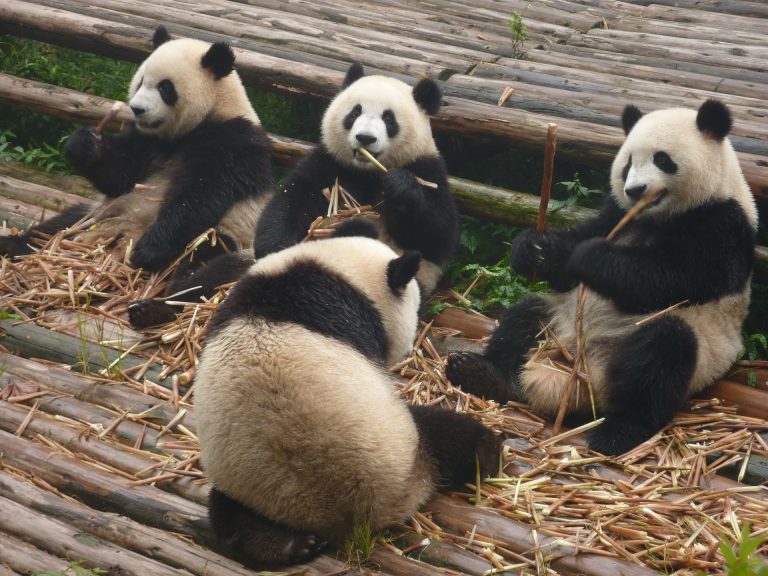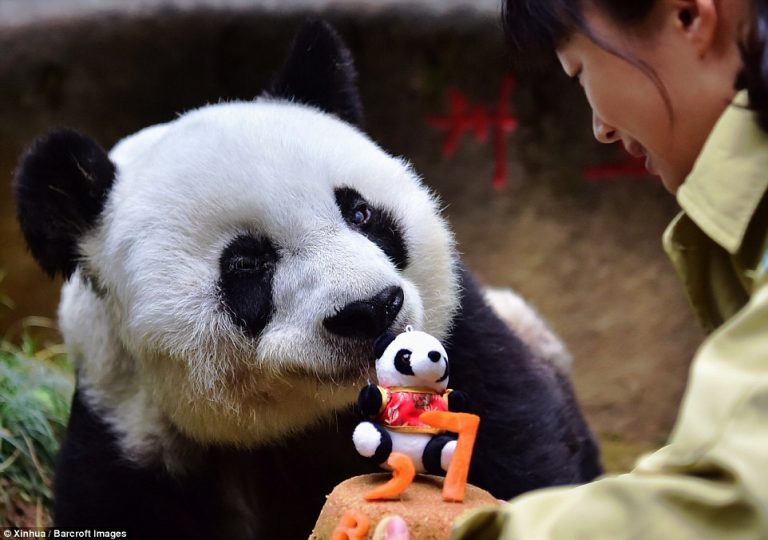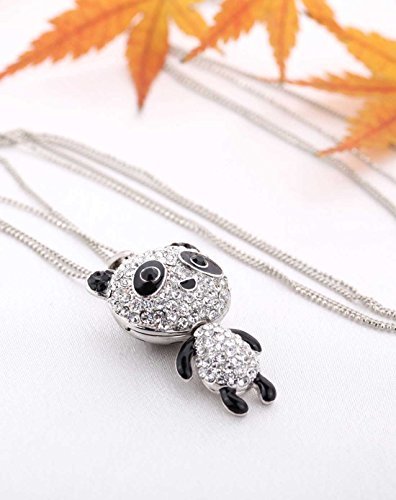The Giant Panda Life Cycle: From Birth To Adulthood
The Giant Panda Life Cycle is an interesting one worth learning more about.

Giant Pandas are one of those few wildlife species that actually live longer in captivity than in the wild. In their native home – the mountainous area of Sichuan, China – they live 15 to 20 years at best. But in captivity, they often live up to almost 40 years old.
As they grow up, they go through different stages, each stage with its own unique characteristics. Read on to learn more about the giant panda life cycle.
Pandas At Birth
At birth, they are tiny just about 1/900th their mother’s size. They weigh an average of 100 grams (4 oz) but have the potential to grow up to 330 pounds as adults. They are born blind and white/pink all over with almost no fur to protect them.
These animals have a particularly high cub mortality rate of up to 60 percent in the wild. In fact, giant panda newborns are likely the most helpless of all baby animals and won’t move out of their den for two months after birth.
Because of this helplessness, many of them in the wild don’t make it past a few weeks.
By one month old, the distinct white-and-black pattern is noticeable and they’ll start crawling and moving about a bit by three months. At the age of four months, they can move faster and will begin running a few steps.
The mother panda cradles her newborn in a paw and won’t leave her den for several days after giving birth.
When they are six months old, the cubs start to eat bamboo. Ironically, though these bears are carnivores, 99 percent of their diet is bamboo. Bamboo is an extremely tough plant that most animals would avoid but panda guts have a thick lining of mucus to protect them from the sharp fragment of bamboo.
Luckily, the once tiny cubs grow very fast and by one year they weigh more than 45 kg (100 lbs).
Giant Panda Life Cycle: Juveniles
By nine months, young pandas are fully weaned from their mother’s milk and feeding entirely on bamboo and other food items. They continue to grow quickly and from the age of 1.5 years they will have to leave their mother’s side if she conceives. But if she doesn’t, they will remain with her for up to two years.
By four years old, they are regarded as fully grown and weigh 150 kg (330 lbs).

Giant Panda Life Cycle: Adulthood
Adult giant pandas consume between 25 to 85 pounds of bamboo on a daily basis. Those in the wild also eat a bit of other grasses and meat such as rodents. The diet of those in captivity is supplemented by food like eggs and bananas along with other specially prepared food.
Giant pandas in the wild fully mature after 4 to 6 years old while those in captivity mature 2 to 3 years earlier. However, at that age male pandas have a difficult time trying to mate until they are at least seven years old. Also, giant pandas are reluctant to mate in captivity – they aren’t easily aroused and this further compounds their tricky reproductive process.
Interestingly, the females also have a hard time trying to conceive. They are only fertile once in a year during spring for two to three days. In addition, they give birth from the ages of 4 and 18 years old so they will have just about six cubs during their lifetime.
A typical birth produces just one panda cub and on rare occasions, twins. Unfortunately, when a mother panda has two cubs she will not take care of two of both of them and will choose to abandon one.
Considering all the above, it’s easy to see why giant pandas are so vulnerable from birth till adulthood.
References:
1. https://en.wikipedia.org/wiki/Giant_panda
2. http://www.animalplanet.ca/Shows/What-s-On-Animal-Planet/Articles/Giant-Pandas-Endangered-Species
3. http://www.bbc.co.uk/nature/life/Giant_Panda






